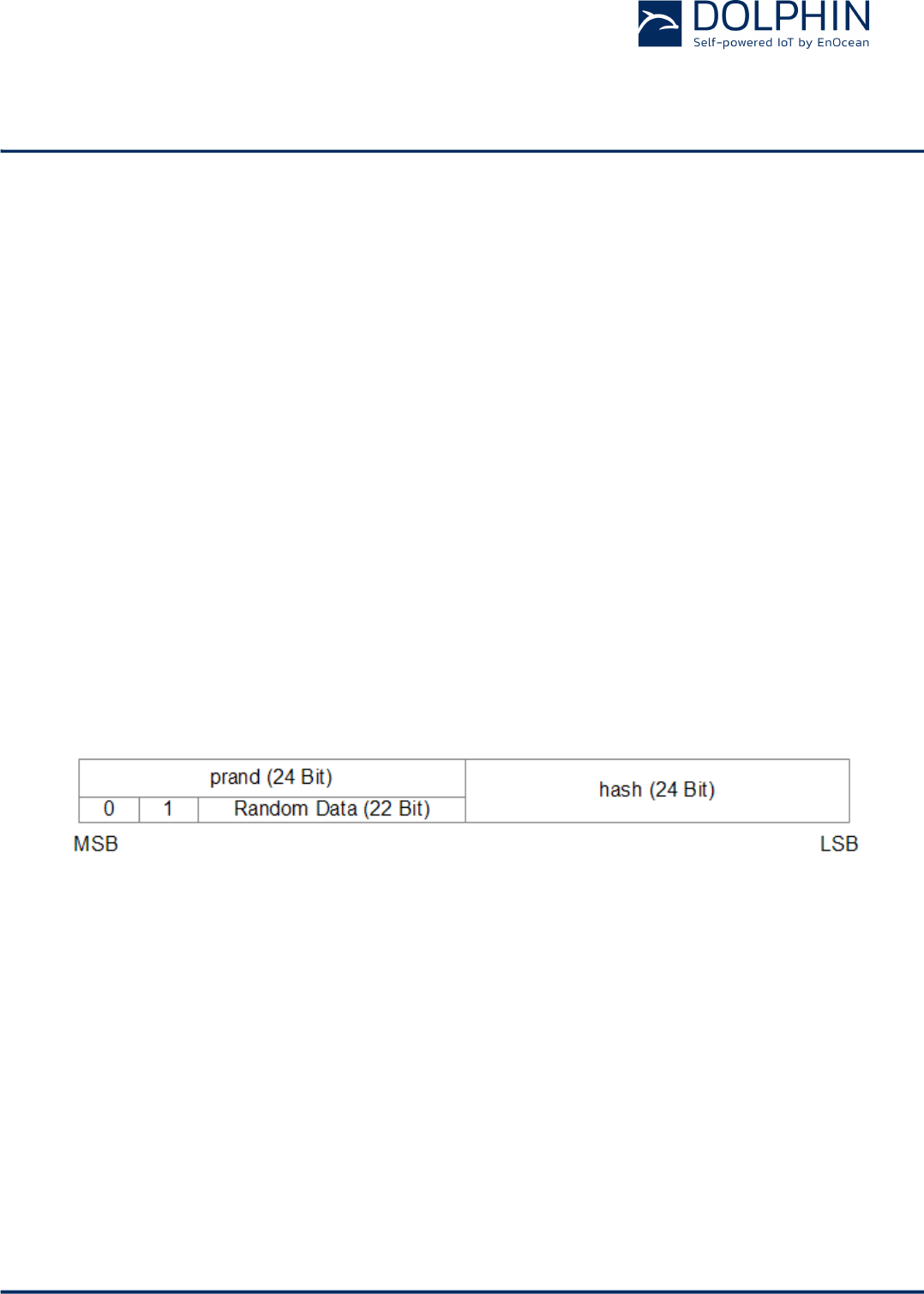User's Manual

USER MANUAL
PTM 215B – 2.4 GHZ Pusbutton Transmitter Module
© 2016 EnOcean | www.enocean.com F-710-017, V1.0 PTM 215B User Manual | v0.8 | September 2016 | Page 18/42
2.9.4.2 Private resolvable source address mode
For some applications it is desirable to modify (rotate) the source address used by PTM
215B in order to prevent tracking of its radio transmissions. At the same time, each PTM
215B device must remain uniquely identifiable by the receiver.
To achieve these goals, PTM 215B can be configured via NFC to use random resolvable pri-
vate addresses.
Using random resolvable private addresses requires that both PTM 215B and the receiver
both know a common key – the so-called Identity Resolution Key (IRK). PTM 215B uses its
device-unique random key as identity resolution key. This key can be configured via NFC
as described in chapter 2.11.
For resolvable private addresses, the 48 bit address field is split into two sub-fields:
n prand
This field contains a random number which always starts (two most significant bits) with
0b10. The prand value is changed for each telegram that is transmitted. Individual ad-
vertising events used to transmit one telegram (as described in chapter 2.5.1) use the
same prand value.
n hash
This field contains a verification value (hash) generated from prand using the IRK
The structure of a random resolvable private address is shown in Figure 11 below.
Figure 11 – BLE private resolvable source address structure
The prand value is encrypted using the IRK. The lowest 24 bit of the result (encrypted val-
ue) are then used as hash.
The concatenation of 24 bit prand and 24 bit hash will be transmitted as 48 bit private re-
solvable source address.










